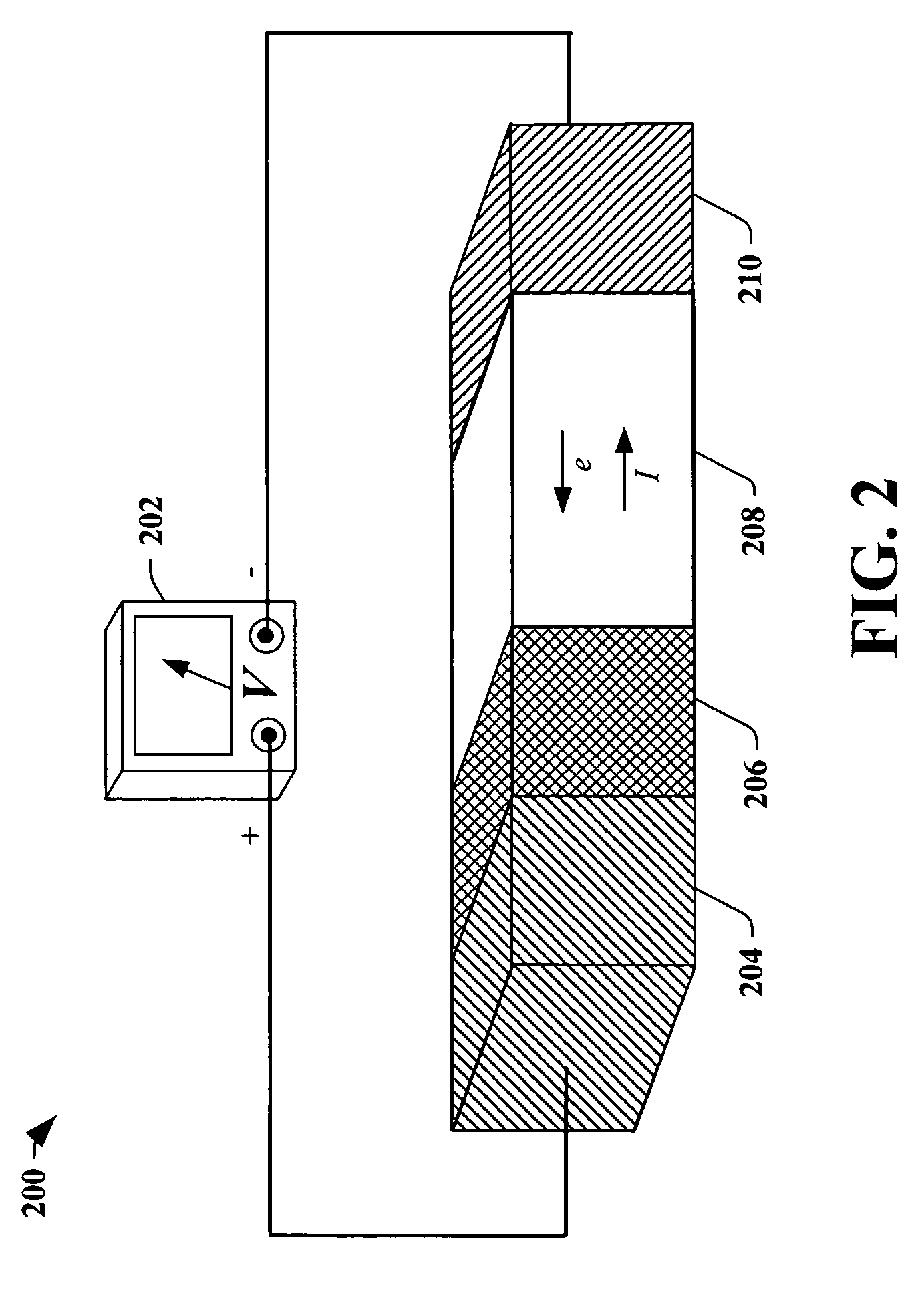Control of memory devices possessing variable resistance characteristics
a memory device and resistance characteristic technology, applied in the field of memory devices, can solve the problems of volatile memory devices losing information, increasing the volume, use and complexity of computers and electronic devices, and increasing the complexity of volatile memory devices, so as to facilitate data storage, increase the accuracy and efficiency of programming multi-bit memory devices, and inherent variability of internal resistance of memory devices
- Summary
- Abstract
- Description
- Claims
- Application Information
AI Technical Summary
Benefits of technology
Problems solved by technology
Method used
Image
Examples
Embodiment Construction
[0030]The following is a detailed description of the present invention made in conjunction with the attached figures, wherein like reference numerals will refer to like elements throughout.
[0031]Cells of a memory device are generally operative to be of two or more states corresponding to various levels of impedance. These states are set by applying a bias voltage and then the cells remain in their respective states until another voltage, in reverse bias, is applied. The cells maintain their states with or without power (e.g., non-volatile) and can be read either electrically or optically by measuring injection current or light emission. The systems and methods of the present invention facilitate both the programming (writing) and erasing of memory devices via control of their resistance characteristics.
[0032]In FIG. 1, a three dimensional diagram of a memory device array 100 in accordance with an aspect of the present invention is illustrated. FIG. 1 is a notional example depicting ...
PUM
 Login to View More
Login to View More Abstract
Description
Claims
Application Information
 Login to View More
Login to View More - R&D
- Intellectual Property
- Life Sciences
- Materials
- Tech Scout
- Unparalleled Data Quality
- Higher Quality Content
- 60% Fewer Hallucinations
Browse by: Latest US Patents, China's latest patents, Technical Efficacy Thesaurus, Application Domain, Technology Topic, Popular Technical Reports.
© 2025 PatSnap. All rights reserved.Legal|Privacy policy|Modern Slavery Act Transparency Statement|Sitemap|About US| Contact US: help@patsnap.com



